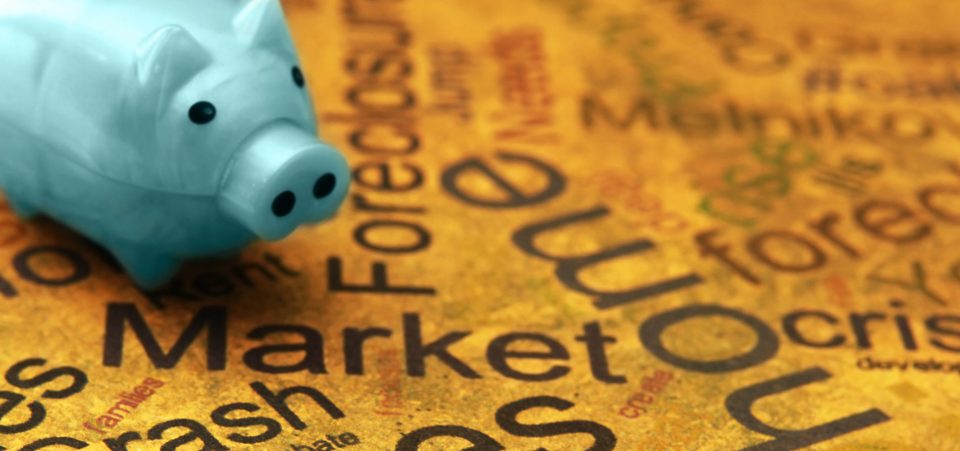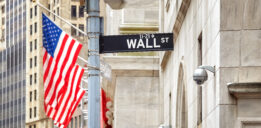Debt and Buybacks Are About to Trigger the Next Financial Crisis
At first glance, any observer would consider suggestions that America is headed toward another financial crisis as ludicrous at best and certifiable at worst.
After all, the outlook for stocks on Wall Street has hardly looked more optimistic. It’s downright shining with glitter and enthusiasm.
Even a company like Tesla Inc (NASDAQ:TSLA), which has not posted any recognizable profits, keeps bouncing back every time it gets struck with a dose of market realism.
Then again, the “Tesla phenomenon” itself should be interpreted as a sign of what former Fed Chair Allan Greenspan described as “irrational exuberance.”
Therefore, a financial crisis might be closer than some stock valuations suggest.
Yet, a financial crisis is the only logical outcome, even if prospects for the stock market could hardly be better.
The problem is that the optimism derives from a single factor: lower taxes.
It’s only thanks to lower taxes that analysts—from all media outlets, as it happens—routinely describe the U.S. economy as “robust.”
And it’s largely thanks to the lower taxes that, in the first half of the year, many companies reported a strong jump in earnings. You’d be forgiven for having anything short of the most encouraging outlook for companies and the performance of stocks on Wall Street.
But therein lies the key to predicting and understanding why all this optimism is misplaced.
Investors Have Been Blinded by the Myth of a Permanent Bull Market
For all of the fabulous earnings forecasts, there lurks in the background an alarming trend that investors are happy to ignore. That trend has a simple and short name: debt.
The U.S. government has more debt and will incur more debt because of those same tax cuts that are propping up stocks on Wall Street.
That fact alone should advise investors that perhaps the only purpose of the tax cuts was/is to have averted a financial crisis in 2018.
The other warning that’s being duly ignored is that the tax cuts have been paying for stock buybacks to the tune of $1.0 trillion. That’s almost 50% more than in 2017. (Source: “Stock buybacks could hit record $1T in 2018: Goldman Sachs,” CNBC, August 6, 2018.)
Stock buybacks might just be the reason the Dow Jones continues to flourish, even if not quite at the pace of January 2018, when it hit over 26,600 points.
Apart from public debt, which makes the United States more dependent on foreign buyers of the dollar (raising all kinds of economic and political risks in the process), American corporations and individuals are ever more in debt.
Think corporate loans, car loans, mortgages, etc.
And debt can cause major problems, especially when interest rates are going up.
Frankly, There’s No Reason for Interest Rates to Go Up
The higher interest rates go, the higher the risk of a financial crisis.
Higher interest rates have one certain effect. Credit becomes more expensive, and so does margin investing.
There’s no need for ultra-convoluted financial models here. Both have the effect of reducing risk appetite. Investors will simply turn away from stocks to bonds, Treasuries, and less volatile investments.
One Financial Crisis Is Leading to the Next
Few realize that the problem of the 2008 financial crisis was less the crash itself and more how the government responded to the consequences of that crash.
Instead of finding ways to help the millions of Americans who lost their savings, encouraging employment (in other words, using the approach that Franklin D. Roosevelt adopted with The New Deal to pull America out of the Great Depression), the U.S. government bailed out the very banks and institutions that created the conditions for the financial crisis.
The result was that, without programs to create and sustain employment, many individuals and companies were left on their own. They survived on credit.
Quantitative easing (QE)—that is, the Federal Reserve’s policy of lowering interest rates to near zero—had the effect of encouraging more borrowing.
Yet, nothing has really changed in the markets. Many Americans, including many who have yet to enter the workforce (i.e. college students), remain overloaded with debt.
Rising interest rates will encourage investors to close their stock positions and avoid getting stuck with a margin call they won’t be able to pay.
Meanwhile, corporations took advantage of QE policies to borrow in order to grow.
Junk Debt Has Shown Its Ugly Face
This is not a criticism of QE necessarily. Rather, it’s a criticism of the markets that have failed to realize the difference between real profit-driven growth and debt-driven growth.
More significantly, the big “institutions” are back at it. They have not learned their lesson, because instead of being handed a bloody nose in September 2008, they got the almost $1.0-trillion bailout nobody else could even dream of securing.
Collateralized derivatives, or some such named “products,” are back in vogue.
These are investment vehicles that are based on debt. They are “collateralized loan obligations” (CLOs). And some investors like them this year since CLOs are at record-high demand. (Source: “The junk debt that tanked the economy? It’s back in a big way,” The Washington Post, July 25, 2018.)
It’s no exaggeration to suggest that the entire U.S. economy risks falling victim to one giant default. Higher interest rates intensify the debt burden.
Debt is the biggest risk facing investors. A stock market correction now could easily turn into a stock market crash and a deep financial crisis with devastating outcomes.
The higher the level of debt, the higher the risk. There’s no way around it.
Excess debt is always the cause of financial ruin at the individual, government, or corporate level.
A Market on Steroids and the Problem of Stock Buybacks
In practical terms, while there are no risk-free propositions in finance, some stocks are more vulnerable to debt than others.
Avoid stocks based on high leverage transactions. Big leverage means big debt. Thus, be wary of AT&T Inc. (NYSE:T). Once a staple for investors interested in longevity and reliable returns, AT&T has gone to the dark side after buying Time Warner in June 2018, pushing debt to almost $200.0 billion.
Also be wary of any of the big corporations that propped up their stock values in 2018 using the aforementioned tactic of buybacks.
If they’re buying back, the managers are less interested in the long-term health of the company and more in the value of their stock options.
Some of these will surprise you. For example, beware of Apple Inc. (NASDAQ:AAPL).
The world’s first trillion-dollar company it may be, but the way it got there is less than, shall we say, ethical. It was the most enthusiastic participant of the stock buyback game of 2018. (Source: “Apple’s Stock Market Scam,” The New Republic, August 3, 2018.)
And the Trump tax cuts and capital repatriation scheme has accelerated and exacerbated this phenomenon.
Apple is not selling more “iPhones” and “iMacs.” Thus, that stock price does not reflect a true indicator of performance.
Rather, it’s a stock market on steroids.
And it’s not just Apple. Mcdonald’s Corp (NYSE:MCD) has been growing less because of “Big Macs” and more because of buybacks. (Source: “Companies Keep Buying Back Stock,” Bloomberg, July 9, 2018.)
Investing and staying in the markets has become a pernicious task, full of potential pitfalls.
It’s important to think in the way described by the overused phrase, “outside the box,” quite literally.
Adopt a Strategy or a Theme
Invest in companies that have the potential to last or those whose stocks correspond to a specific socioeconomic trend, which provides a lens, or logic, through which to gauge their performance.
Many companies are borrowing to merge, acquire, and simply survive. More often than not, corporations are taking out loans to perform buybacks.
Thus, beware of stocks that are just too bullish.
Soon, they won’t be.
Low interest rates encouraged borrowing. The Fed’s gradual lifting of rates may have triggered the last major bout of borrowing before rates increase.
Except, sooner or later, the debt will have to be repaid at a higher rate.
That never fails to cause a financial crisis.






